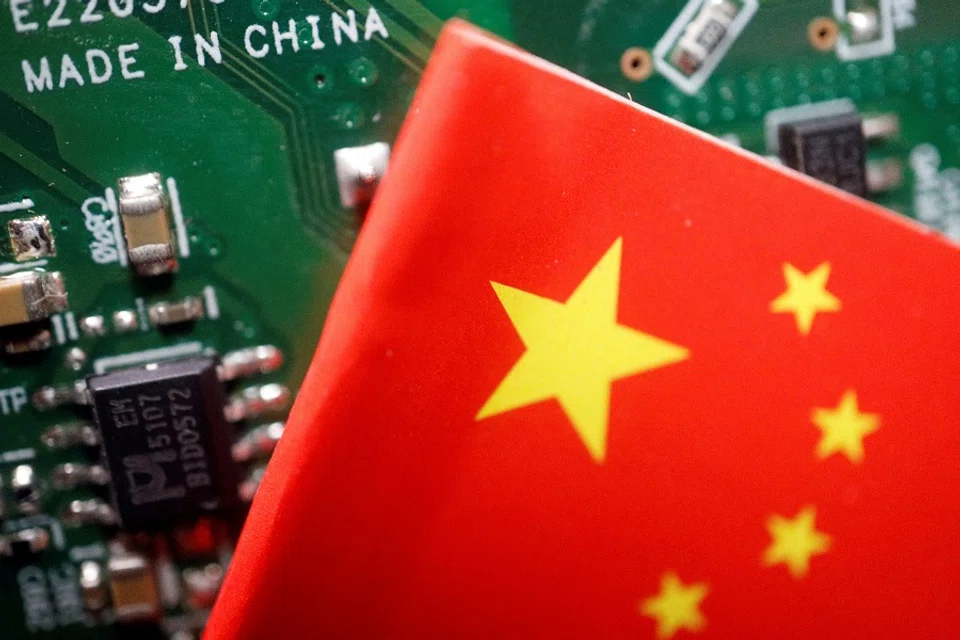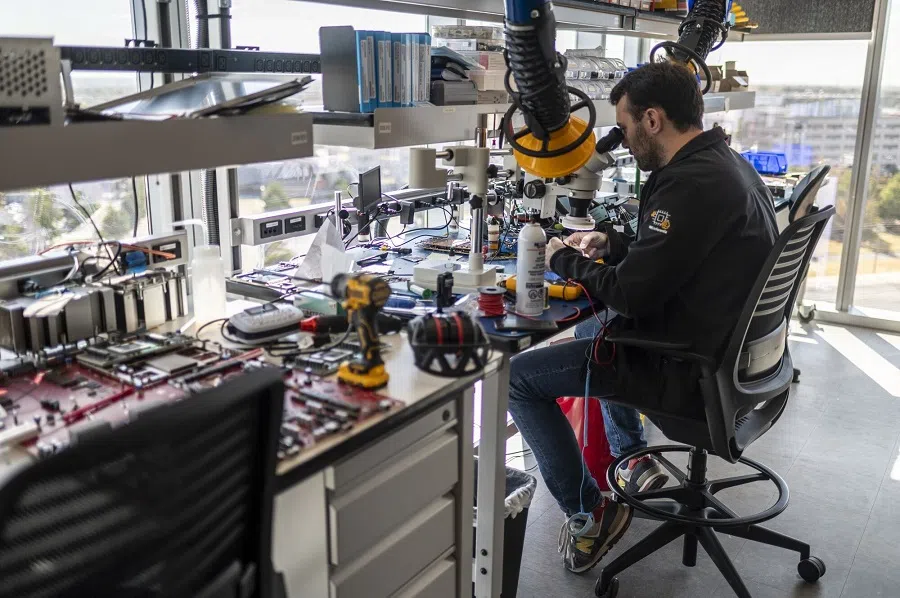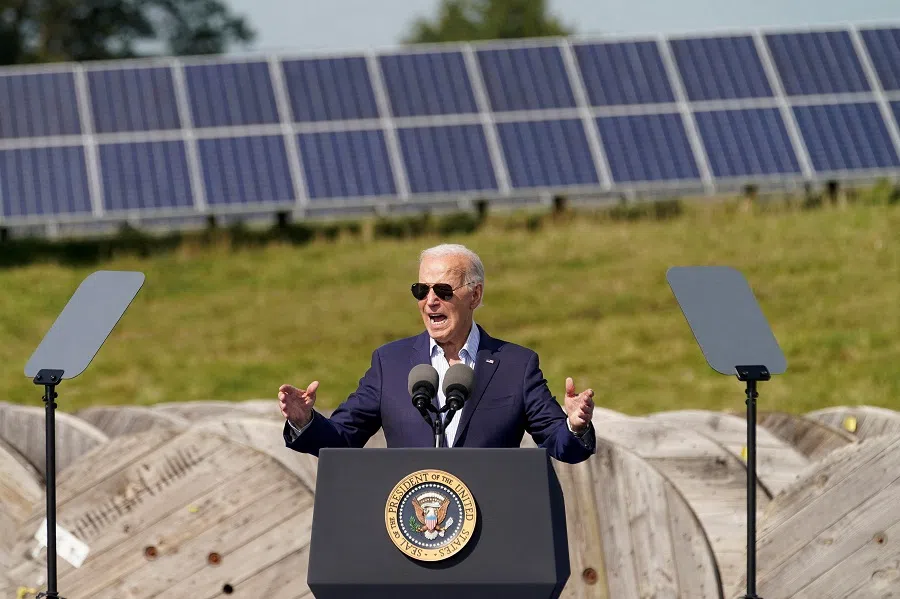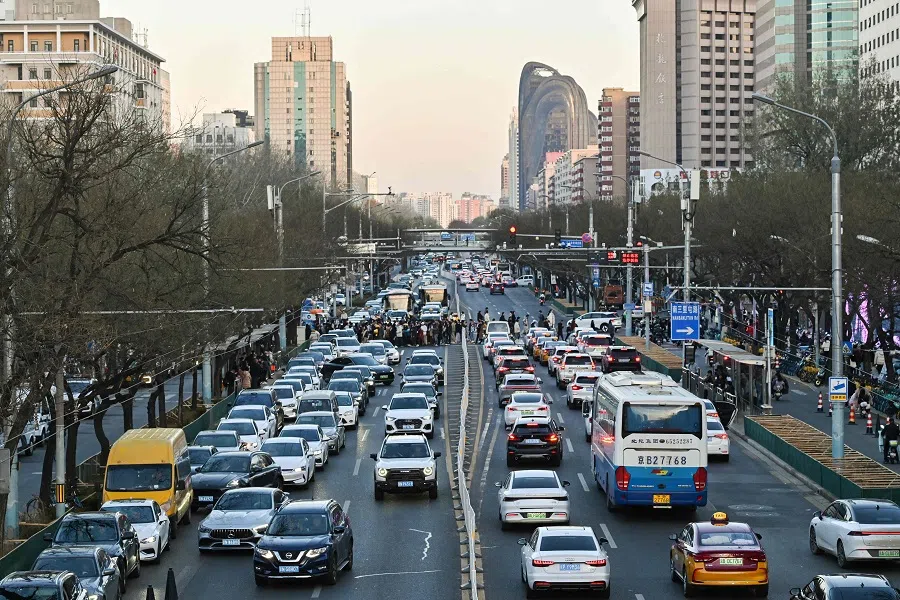Chip wars: Can China replicate its EV success?
In its latest bid to inhibit China’s technological development, the outgoing Biden administration has slapped China with the most stringent slew of semiconductor export restrictions to date. Lianhe Zaobao China news editor Yang Danxu tells us more about the potential consequences of the new export controls on China and the implications for US-China technological competition.

On 2 December 2024, the outgoing Biden administration introduced new semiconductor export controls against China, aiming to curb China’s ability to acquire and manufacture advanced chips.
This marks the third major move by the US in three years. The new restrictions impose export controls on 24 types of semiconductor manufacturing equipment and three software tools, and regulate high-bandwidth memory (HBM), which are essential for artificial intelligence (AI) chips.
HBM is a key component in high-performance AI chips and is critical for large-scale and high-intensity AI training. The new rules on HBM directly target the ongoing intense competition in the AI field.

Furthermore, 140 companies have been added to the US Department of Commerce’s Entity List, including 136 Chinese companies as well as one Japanese company, one Singaporean company, and two South Korean companies. These four overseas companies are affiliated with Chinese firms, serving as fully-owned subsidiaries or related entities of Chinese semiconductor companies abroad.
... the “small yard” established by the US to block China’s advancements in the chip sector has now grown.
New restrictions more stringent and broader in scope
Compared to the previous two rounds of control measures, which primarily targeted leading chip design companies and key equipment manufacturers, this round of additions to the Entity List encompasses a broader range of segments within the semiconductor manufacturing supply chain. According to Chinese media analyses, the newly listed Chinese companies include virtually all major domestic semiconductor equipment manufacturers.
The new regulations also expand the jurisdiction of the US to cover equipment produced overseas. According to reports, equipment manufactured in locations such as Israel, Malaysia, Singapore, South Korea and Taiwan will also be subject to the new restrictions. In other words, the “small yard” established by the US to block China’s advancements in the chip sector has now grown.

This round of semiconductor restrictions is regarded as the most stringent strategic export controls imposed by Washington to date. In a statement, the Bureau of Industry and Security under the US Department of Commerce emphasised that the new regulations underscores the US’s “small yard, high fence” strategy and will restrict China’s ability to produce technologies key to its military modernisation or repression of human rights.
Key Biden administration officials, including Commerce Secretary Gina Raimondo and national security adviser Jake Sullivan, have explicitly stated that the purpose of these measures is to impair China’s capacity to independently develop advanced technologies, thereby preventing threats to US national defence security.
... the incoming Trump administration will very likely continue these new policies, while China’s countermeasures are expected to go on, further intensifying the technological rivalry between the US and China...
Intensification of US-China tech war
The regulatory “big stick” wielded by the Biden administration in its final days will become a political legacy, slowing the technological progress of its strategic rival China. One can imagine that the incoming Trump administration will very likely continue these new policies, while China’s countermeasures are expected to go on, further intensifying the technological rivalry between the US and China, as tensions in the tech sector between China and the US deepen even further.
Following the introduction of a new round of restrictions issued by Washington, China’s Ministry of Commerce announced on 3 December that it would ban the export of dual-use products such as gallium, germanium, antimony and superhard materials — widely used in military or semiconductor manufacturing — to the US, in the name of national security interests and non-proliferation. Additionally, China will implement stricter end-user and end-usage reviews on the export of graphite to the US.
Disagreements even among US policymakers
Since the start of the China-US tech war from Trump’s first term in office, US policy towards China in the tech sector has undergone a fundamental change. The tech war has become increasingly intense over the years, with the scope expanding and involving more stakeholders. The impact has hit not just US companies, but foreign firms as well. There was intense internal debate before the US introduced this fresh round of semiconductor control measures, highlighting the complexity behind this tech war.

US national security hawks have called for a strong crackdown on China concerning chip issues, but industry players have warned that overly stringent controls could harm the US’s technological leadership position. Intense negotiations and lobbying preceded the announcement of the new measures, reflecting this tug-of-war in the final policies.
According to The New York Times, the new regulations allow for some exceptions that might favour US exporters. For example, the rules set up a new and complicated licensing policy that will allow officials to grant companies special permission to sell to some Chinese factories linked with Huawei, the sanctioned Chinese tech company.
The Financial Times also noted that while the new rules impose controls on HBM, they did not list Chinese company ChangXin Memory Technologies — which is capable of producing HBM — on the Entity List. Analysts have pointed out that the new regulations are complicated even for experts in the field, and this complexity reflects the intensity of the negotiations during the formulation process.
... the increasingly lengthy list of Chinese semiconductor-related companies on the Entity List is in fact an indication of China’s increased investment and capability improvements in this sector.
China on the path towards hi-tech self-sufficiency
But a clear emerging trend is that the chip sector ecosystem is becoming more fragmented. The US “small yard, high fence” approach will continue to expand, with the walls becoming higher. Beijing can no longer harbour hopes of returning to purchasing core technologies and components from the US, and this will further solidify its determination to seek domestic alternatives and attain self-sufficiency in hi-tech industries.
Some felt that although China is still far from producing advanced chips, the increasingly lengthy list of Chinese semiconductor-related companies on the Entity List is in fact an indication of China’s increased investment and capability improvements in this sector.
The path to self-reliance will not happen overnight. In the short term, China will face another difficult period of being “in a chokehold”, with some companies possibly going bankrupt under US sanctions. However, it is not entirely impossible for China to catch up and break through the blockade in the long run.
Just as how Chinese electric vehicle manufacturers took the world by surprise by challenging the leading positions of traditional automobile manufacturing powerhouses from Germany and Japan, could a similar scenario quietly unfold in the chip industry?
This article was first published in Lianhe Zaobao as “拜登临别再挥晶片管制“大棒””.





![[Big read] China’s 10 trillion RMB debt clean-up falls short](https://cassette.sphdigital.com.sg/image/thinkchina/d08cfc72b13782693c25f2fcbf886fa7673723efca260881e7086211b082e66c)